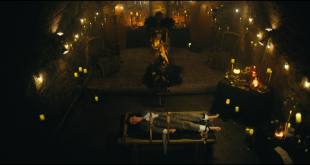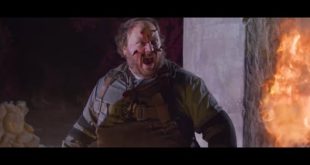Horror is one of the most-loved film genres, with many classic stories that have been re-invented and re-told over the years. By looking at some of the most early-anticipated movies of 2025, we can see which of the most famous characters and stories are being brought back to life in new ways.
The Current Trend for Re-Inventing and Rebooting
The movie industry is currently filled with new versions of classics. 2025 has already seen zombies, vampires, and other creatures presented in fresh new ways. The Ugly Stepsister added a horror twist to the Cinderella story, while Cloud does something similar with social media.
Re-inventing classics isn’t limited just to horror movies, as we can see this trend in other areas of entertainment, such as TV shows, where spin-offs and prequels let us dig deeper into the story. Technology has also played a big part in re-inventing music and other entertainment, including classic games like these bingo live versions. Whack a Mole and Break the Bank are among the ways of playing with a live presenter on the screen. Players can now chat as well as try to win jackpots, adding a new twist to the game.
Guillermo del Toro’s Frankenstein to Show the Emotion of the Story
Frankenstein is arguably the most famous and popular horror story of all time. From Boris Karloff lumbering ont0 the screen in the 1931 Frankenstein movie to 1994’s Mary Shelley’s Frankenstein by Kenneth Branagh, the list of the best movies featuring the creature is long and varied. What can del Toro add to this story?
The director has often spoken about his desire to create the best Frankenstein movie ever made, stating that he wanted to make a tragic adventure story. His version gets a limited release in theatres on October 17, before landing on Netflix in early November. Rather than a true horror film, it seems set to be an emotional adventure story, with Jacob Elordi playing the role of the creature.
The Tragic Love Story Behind Dracula’s Curse
The 1897 Gothic horror story by Bram Stoker titled Dracula has proved to be one of the most enduring tales in history. It’s been tackled by many directors, with a huge variety of actors taking on the title role. Bela Lugosi’s performance in 1931’s Dracula is ranked at the top of this list, but there have been many other memorable attempts over the years, ranging from pure horror to comedy and silent movies.
Dracula: A Love Tale by Luc Besson is based on the famous book but promises us a closer look at Dracula’s love life. He became a vampire after the death of his which caused him to renounce his faith. However, when he travels to London, he sees a woman who looks a lot like his lost love.
These examples show us how classic horror characters have been adapted to fit new versions of the stories we know so well. Expect to see the likes of Dracula and Frankenstein continue to evolve as directors find new ways of re-imagining them.
 Horror News | HNN Official Site | Horror Movies,Trailers, Reviews
Horror News | HNN Official Site | Horror Movies,Trailers, Reviews






